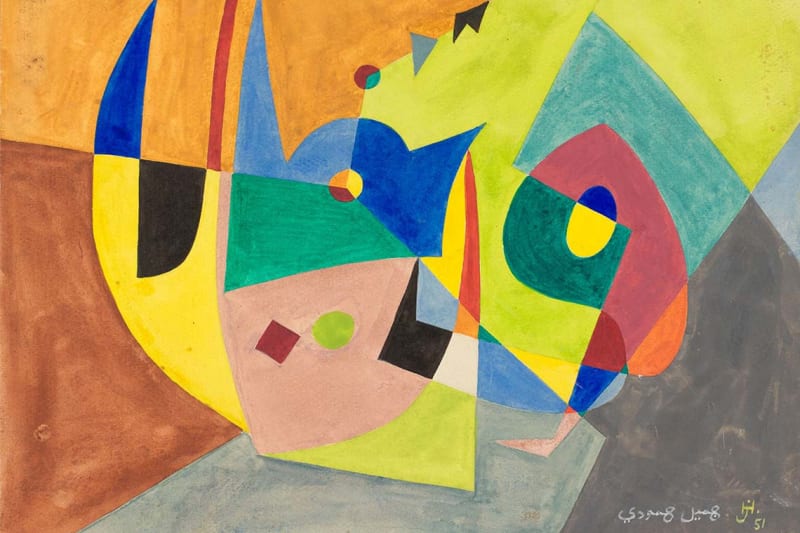Présences Arabes – Modern Art and Decolonisation, Paris 1908–1988 at the Musée d’Art Moderne in Paris chronicles the participation of Arab artists from former European colonies in the Paris art scene while showcasing the impact of decolonisation on Parisian art of the 20th century.
The exhibition currently showing at the Musée d’Art Moderne in Paris, Présences Arabes – Modern Art and Decolonisation, Paris 1908–1988, is the result of four years of research by curator Morad Montazami, with Madeleine de Colnet and Odile Burluraux. The exhibition goes beyond the misunderstanding of a French national art history, explains Montazami. It depicts works by artists who have strong links to France and who also happen to be of Arab origin and also reflects on the role that the French capital has played in their artistic emancipation and in new ways of decolonised thinking. “The exhibition is intended to show national [French] audiences that Arab art has always existed here,” the curator tells Canvas, as if stating the obvious, surrounded by works of Arab art from so many French collections, including the Bibliothèque Nationale and the Centre Pompidou. The show unpicks the complex interplay of French and Arab themes and media – it is interesting to see the work of established Arab artists such as Etel Adnan, Baya and Inji Efflatoun dating back to their student years in Paris and to be able to see images of artists such as Effat Naghi in the presence of André Lhote and his wife, or in the artist’s studio near Montparnasse in Paris. Such a broad array of Arab artists’ work is situated in surprising coexistence in the capital, giving Paris added international – and particularly Arab – significance.
In terms of layout, Présences Arabes follows four chapters or chronological themes, beginning with Nahda: Between Arab Cultural Renaissance and Western Influence, 1908-1937. An-Nahda is ‘the Awakening’ of European politics and culture to the Arab world, and exemplified in a c.1908-10 oil painting by the Lebanese philosopher Khalil Gibran and which depicts his friend, the freelance journalist and suffragette, Charlotte Teller. Gibran attended the Académie Julian, an art school and studio founded by the artist Rodolphe Julian in 1868 and frequented by artists such as Dubuffet, Derain, Duchamp, Léger and Matisse. Later, at the École des Beaux-Arts, Gibran became interested in symbolism, painting spectral visages of an older and younger woman alongside Teller’s face. Not only does this give viewers an insight into the artist’s future philosophical leanings but it also reflects on the importance of Teller’s beliefs in women’s liberation and in its subsistence.
Jul 31, 2024







